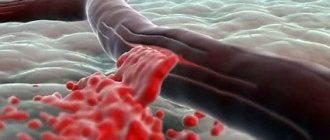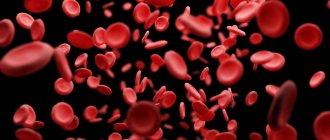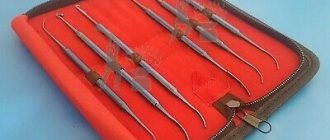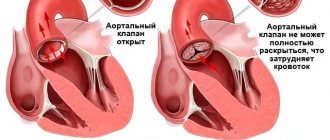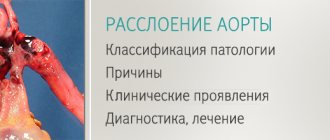For the last 10 years, we have been performing the Marmara procedure on patients with varicocele. The essence of this operation is to ligate the dilated veins in close proximity to the epididymis. This allows you to ligate small veins without the risk of trauma to the spermatic duct and the artery supplying the testicle.
Marmara surgery is performed under local anesthesia and does not require a long recovery period.
Advantages of the Marmara operation
- High efficiency
- Safety - low risk of ligation of testicular arteries, etc.
- Low morbidity - the incision is only about 3 cm long.
- Local anesthesia - none of the risks associated with general anesthesia.
- Short hospital stay (discharge the next day after surgery).
Dilatation of veins of the epididymis
Microsurgery
Binocular magnification
Scrotal incision during Marmara operation
Anesthesia and the course of the operation
We perform Marmara surgery on almost all patients under local anesthesia. Since the spermatic cord lies close to the skin and is easily accessible, a very small skin incision is made.
At the request of the patient or in case of intolerance to local anesthetics, spinal or intravenous anesthesia can be used, but such cases have not been encountered in our practice.
An incision in the skin of the scrotum is made slightly above the projection of the testicle in the projection of the spermatic cord. The length of the incision is 2.5-3 cm. After removing the spermatic cord into the wound, all dilated veins (with a diameter greater than 2 mm) are carefully isolated and ligated. It is important to ligate only the veins without affecting the arteries supplying the testicle.
Since we have to work with vessels with a thickness of 0.5 mm, microsurgical instruments and magnifying optics are used. During the operation, the wound is irrigated with a vasodilator, and the Valsalva maneuver is applied (pushing the patient).
The duration of the operation, including anesthesia, is about 40 minutes. The wound is sutured in layers with absorbable threads; there is no need to remove sutures.
Typically, the patient is discharged the next day. Since rest and lack of physical activity are extremely important in the first 24 hours after surgery, we recommend spending the first 24 hours after surgery in a hospital. The patient is discharged the next day after a follow-up examination by a doctor and dressing.
Recovery period
- In the first 5-7 days after surgery, we recommend staying home and limiting physical activity. For this period, the patient is provided with sick leave.
- The postoperative wound heals in 5-7 days. There is no need to remove the sutures, as they are made of absorbable material.
- Serious physical activity (gym training, long-distance running) should be limited for 2 months. After these two months, the spermogram is re-evaluated.
How to perform Marmara surgery for varicocele
The purpose of surgery for varicocele is to ligate or cross the varicose veins of the testicle, thereby eliminating the cause of the disease and restoring normal blood supply. Previously, supra-inguinal access (that is, above the inguinal canal) was used for this purpose - these are the Ivanissevich and Palomo operations.
At the same level, veins are crossed during laparoscopic surgery. The reason for the popularity of these methods was that the testicular vein at this level is represented by 1-3 rather large trunks, which, as a rule, were ligated as a single block, together with the accompanying lymphatic vessels, and during the Palomo operation - with the testicular artery.
A fairly high percentage of relapses and complications (formation of dropsy, testicular atrophy) after these operations forced us to look for more effective and safe methods.
And with the development of microsurgical technology, an operation was proposed that has become today the “gold standard” for the treatment of varicocele - the Marmara operation .
Indications for Marmara surgery are any stage of varicocele, including the bilateral form of the disease. The Marmara operation is especially effective for recurrent varicocele, after unsuccessful Ivanissevich or Palomo operations.
Infertility caused by varicocele is a good reason to perform this particular microsurgical intervention due to the maximum positive effect on testicular function. In addition, the Marmara operation can easily be performed on patients who do not want general anesthesia (that is, anesthesia).
contraindications to performing the Marmara operation for varicocele. The exception is general surgical contraindications, which are described on this page . This intervention can be performed on all patients with varicocele, if the doctor has the appropriate experience and technical equipment.
Preparation for Marmaru surgery for varicocele involves shaving the pubic and scrotal hair (the evening before or the morning of the operation).
If the operation is planned under general or spinal anesthesia, then for six hours it is necessary to avoid taking any liquid or food (strictly on an empty stomach).
Gonadal vein embolization
We are talking about thrombosis of a damaged vein. A special catheter is inserted through a puncture of the vein in the thigh; it is gradually brought to the renal and then to the spermatic vein. Using contrast, the doctor determines which vessels need to be turned off. Using a catheter, a substance is injected that embolizes and “turns off” pathologically dilated veins.
Embolization requires virtually no downtime because the entire operation is performed through a small puncture. This is an effective and modern treatment method.
The choice of treatment method for varicocele depends on the patient’s wishes, his state of health, and the availability of medicine.
To receive treatment for varicocele at the highest level, contact the Urology Clinic named after R. M. Fronshtein of the First Moscow State Medical University named after I.M. Sechenov (State Urology Center). September 9, 2020
Akopyan Gagik Nersesovich - urologist, oncologist, doctor of medical sciences, doctor of the highest category, professor of the department of urology of the Federal State Autonomous Educational Institution of Higher Education First Moscow State Medical University named after. THEM. Sechenov
Clinic of Urology named after R. M. Fronshtein of the First Moscow State Medical University named after I.M. Sechenov invites you to an appointment with experienced urologists. To get an appointment with a qualified specialist, just fill out a short online application. Be sure to fill out all the fields, including a brief description of the symptoms (the “Information” column), specify whether you are interested in a secondary or primary appointment.
Pay attention to the “Attach file” button - it allows you to immediately send medical documents to the doctor in electronic form. This may include images, tests and other information that will be important to determine the diagnosis.
Still have questions? Call us by phone or! On a weekday, you can come for a consultation with a doctor within a few hours after filling out the online application. Do not delay visiting a specialist if you are concerned about your genitourinary health!
Marmara operation technique
The operation can be performed under general anesthesia, spinal or local anesthesia. The patient can choose the type of anesthesia in our clinic himself, after discussing all the pros and cons with the surgeon and anesthesiologist.
During the Marmara operation, a small cosmetic skin incision (no more than 2-3 cm) is made in the groin area, on the side of the base of the penis. Next, the urologist isolates and holds the spermatic cord.
After hydropreparation, using an operating microscope and microsurgical instruments, each of the 8-12 stems of the testicular vein is isolated and ligated separately, avoiding crossing the lymphatic tract. Of course, this is a very painstaking work, which also requires special equipment, but the results of the operation are well worth the effort.
During the isolation of the venous trunks, it is very important to identify and preserve the testicular artery and vas deferens. A microscope or binoculars help with this. on the accuracy of this stage of the Marmara operation .
If, according to ultrasound data of the scrotal vessels, dilatation of not only the internal but also the external spermatic veins (or communication between them) was detected, it is advisable to apply the Goldstein modification.
In this case, through the existing standard incision (sometimes it has to be expanded for this purpose), the corresponding testicle is removed from the scrotal cavity. Next, all dilated branches of the external spermatic veins (going to the skin of the scrotum) are identified, ligated and intersected. After this, the testicle sinks back into the scrotum.
The final stage of the Marmara operation is layer-by-layer suturing of the surgical wound with self-absorbing synthetic threads.
Symptoms of the pathology:
- a noticeable increase in the size of the scrotum;
- nagging pain in the scrotum, especially noticeable when walking;
- diagnosed or suspected male infertility;
- pathological phenomena observed in the spermogram in the composition of the seminal fluid - a decrease in the activity and number of sperm;
- obvious deformation of the tissues of the scrotum;
- stopping the growth of one of the testicles or its atrophy during adolescence.
At the initial stages of development, the pathology may not manifest itself symptomatically. At this stage, it most often does not require therapy. At the third and fourth stages, radical treatment methods are recommended.
Postoperative period
After completion of the Marmara operation, the patient is placed in a ward for some time under the supervision of medical staff. After a follow-up examination, he can leave the clinic with an extract and recommendations.
The next day, I conduct another follow-up examination and a demonstration dressing change (in which I demonstrate the sequence of actions for the patient). Patients usually perform the rest of the dressings themselves at home. After 10-12 days, I once again monitor the healing of the wound and remove the stitches. At the request of the patient (for example, a nonresident who finds it difficult to come for an examination in 10 days), I apply self-absorbing sutures.
Restrictions after Marmara surgery are limited to the exclusion of heavy physical activity for a period of 1 to 3 months.
In general, the postoperative period after Marmara surgery is easy. The patient does not become incapacitated and can return to daily activities the very next day. Pain is not typical for this operation, and the need to take painkillers is extremely rare.
A final examination, including ultrasound of the scrotum and spermogram analysis (if the Marmara operation was performed for infertility), is carried out 3 months after the operation.
Necessary examination for hospitalization
- Ultrasound of the scrotum with Dopplerography of blood vessels.
- Spermogram.
- Biochemical and clinical blood test; coagulogram; Analysis of urine.
- Blood test for hepatitis B, C, HIV, syphilis.
- Fluorography; ECG (electrocardiogram).
| Service | Price |
| Operation Marmara | 20,000 rub. |
| 02.02.01.135 - 2-bed ward | RUB 2,790 |
Complications of the Marmara operation for varicocele.
Like any surgical procedure, complications may occur during the Marmara operation . These include: bleeding and hematoma of the scrotum, infectious and inflammatory complications, relapse of varicocele, formation of testicular hydrocele (hydrocele), testicular atrophy.
The frequency of complications of the Marmara operation directly depends on the experience of the surgeon and in my practice for many years does not exceed 1-2%. At the same time, fortunately, there were never any serious complications (which include testicular atrophy).
To reduce the risk of complications, I do not skimp on instruments; I use only proven and high-quality disposable consumables and suture material from leading Western manufacturers.
So, who needs to undergo Marmara surgery for varicocele?
- For a patient newly diagnosed with varicocele
- For a patient with bilateral varicocele
- In case of unsuccessful previous operations for varicocele
- In case of recurrence of varicocele
- A man with infertility due to varicocele
Where in Moscow can a Marmara operation be performed for varicocele? I operate at the Centrosoyuz Clinical Hospital, a cozy hospital located in the center of Moscow. The operation is performed both on a commercial basis and under a compulsory medical insurance policy.
The advantages of microsurgical varicocelectomy according to Marmar are:
- A small cosmetic incision in the groin area, in the hair growth area (the scar is almost invisible)
- The greatest efficiency of the operation is achieved through the use of operating binoculars and microsurgical instruments
- Lowest percentage of relapses and complications (less than 5 percent)
- Can be performed on an outpatient basis, without hospitalization
- Short and easy postoperative and recovery period
I offer my patients only the most modern and most effective treatment methods!
Preliminary stage
On the eve of surgery, it is necessary to perform hygiene procedures (take a shower, get rid of hair). Another important condition is an empty stomach (dinner will have to be given to the enemy). Be sure to purchase elastic bandages. They wrap the legs before the operation (like a mummy). This is done to prevent the development of varicose veins in the legs.
Before the operation begins, it is also necessary to undergo a number of medical examinations:
- If you have chronic diseases, consult your treating specialists.
- Donate blood and urine for a general analysis, as well as for the detection of hepatitis, HIV infection, and syphilis.
- Visit the fluorography room and do an electrocardiogram of the heart.
Questions about the article
Arthur
August 28, 2021 at 03:48 pm
Hello! Will it hurt during the operation?
Anton Evgenievich Rotov
August 29, 2021 at 08:56
Of course not! No pain, regardless of the type of anesthesia - general or local!
Fedor
August 4, 2021 at 10:57 pm
Hello! I have a question. What does “avoiding heavy physical activity” mean? For example, lifting a suitcase when traveling? The plane rides themselves?
Anton Evgenievich Rotov
August 5, 2021 at 10:09 am
I usually explain it like this. The first month - only everyday activity (walking, running - without restrictions, weights - no more than 5-7 kg). Next - up to 3 months - exercises with your own weight (push-ups, pull-ups, squats without weights, etc.), weights - up to 10-15 kg. After 3 months - no restrictions.
Dmitriy
May 27, 2021 at 11:54 am
There is no pain, but upon palpation it feels like the spermatic cord is slightly changed, but not always, sometimes it returns to normal, becomes the same as on the right, what could this mean, I had a marmar operation a month ago
Dmitriy
May 27, 2021 at 05:36
Hello, 2 months ago I had an operation according to Ivanasseivich, after which I began to engage in physical activity and a relapse was revealed, then a month after the 1st operation, I had a second operation according to marmara, a month has already passed when I can return to full physical activity, for example swimming , basketball and what can I do now?
Anton Evgenievich Rotov
May 27, 2021 at 10:39 am
Bodyweight exercises (including football, basketball) are acceptable one month after surgery. With weights - after 3 months
